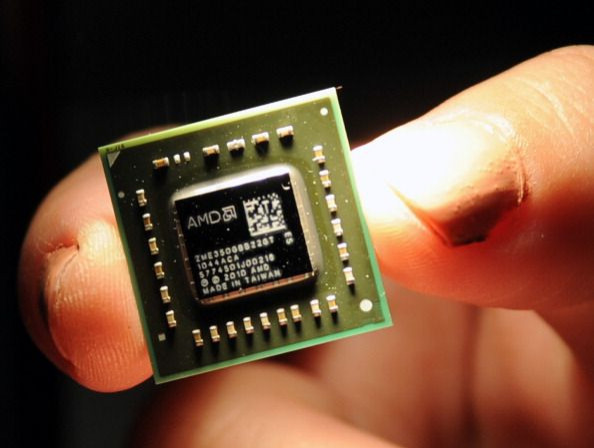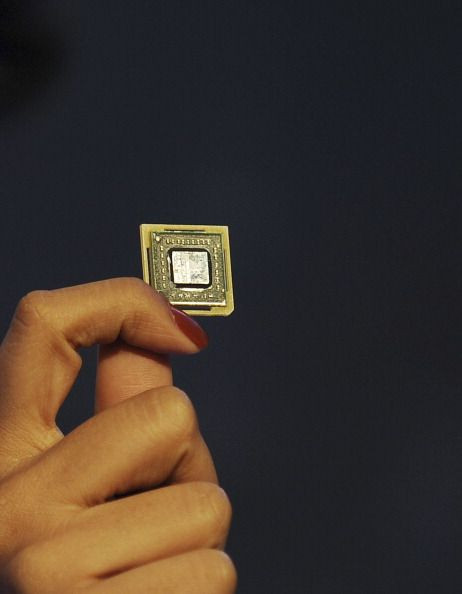AMD Cuts Prices Two Days Before Its Graphics Card Launch

On July 5, just two days before the official launch of the Radeon RX 5700 and RX 5700 XT graphics cards, Advanced Micro Devices (NASDAQ:AMD)confirmed a rumor that had emerged earlier in the day. AMD scrapped its original prices for the cards, cutting them by $30 and $50, respectively. The RX 5700 will now sell for $349, down from $379, while the RX 5700 XT will sell for $399, down from $449.
This unusual move is the latest development in an increasingly competitive graphics card market. NVIDIA (NASDAQ:NVDA) has been the market leader for a long time, cementing that lead in the past few years with best-of-breed products that AMD couldn't match. But the company's escalating prices opened a door for AMD to make a comeback, and that's exactly what the perennial runner-up is trying to do.
The story so far
AMD announced the RX 5700 and RX 5700 XT at the Electronic Entertainment Expo in June. The cards, based on AMD's new Navi GPU and RDNA architecture, are built on a 7nm manufacturing process from Taiwan Semiconductor Manufacturing. This one-two punch of a new architecture and a cutting-edge manufacturing process put AMD in a position to compete in the middle-to-high-end graphics card market.
At the time of that announcement, the RX 5700 was set to go head-to-head with NVIDIA's $349 RTX 2060, while the RX 5700 XT was positioned against the $499 RTX 2070. AMD's benchmarks showed its cards winning on average performance across 10 different games.
Given the performance of AMD's new cards, NVIDIA was forced to react. The market leader announced a product refresh, really a price cut in disguise, on July 2. The RTX 2060 would remain at the same price, but the RTX 2070 would be dropped for the new RTX 2070 Super. The Super variant inherits the original price tag of $499, but it provides performance close to the high-end RTX 2080.
A new RTX 2060 Super slots in between the RTX 2060 and RTX 2070 Super, providing performance on par with the original RTX 2070 for $399. In effect, NVIDIA lowered the price for RTX 2080-level performance by $200, and it reduced the price for RTX 2070-level performance by $100.
While AMD's new cards were competitive against NVIDIA's original lineup, NVIDIA's product refresh flipped the script. The new RTX 2060 Super now undercut the RX 5700 XT on price (which was then $449) while providing roughly the same performance as the old RTX 2070.
In reaction to NVIDIA's de facto price cut, AMD followed suit with a price cut of its own. The RX 5700 will now launch at the same price as the RTX 2060, and the RX 5700 XT will launch at the same price as the RX 2060 Super. Disregarding NVIDIA's advantage in ray tracing, AMD's new cards may provide the best performance per dollar after this price cut, based on AMD's benchmarks.
A price war is brewing
If NVIDIA's products are now at a disadvantage after AMD's price cuts, the company may need to take further action to protect its market share. That may mean sacrificing some of its profitability by cutting prices further.
The good news for NVIDIA is that AMD still can't compete in the ultra-high-end of the market. AMD's latest attempt, the Radeon VII, wasn't enough to dethrone the market leader. But AMD is almost certainly plotting to take on NVIDIA's highest-end products at some point down the road.
With AMD at its most competitive in years, NVIDIA's price-raising strategy has hit a brick wall. A price war would not be good for its bottom line, but that may be exactly where the market is headed.
This article originally appeared in the Motley Fool.
Timothy Green has no position in any of the stocks mentioned. The Motley Fool owns shares of and recommends NVIDIA. The Motley Fool recommends Taiwan Semiconductor Manufacturing. The Motley Fool has a disclosure policy.





















